
Consumer Insights
Uncover trends and behaviors shaping consumer choices today
Procurement Insights
Optimize your sourcing strategy with key market data
Industry Stats
Stay ahead with the latest trends and market analysis.
The Expert Market Research report, titled “Coconut Yogurt Pots Manufacturing Plant Project Report 2025 Edition: Industry Trends, Capital Investment, Price Trends, Manufacturing Process, Raw Materials Requirement, Plant Setup, Operating Cost, and Revenue Statistics” includes various aspects that are critical for establishing a coconut yogurt pots plant. These include infrastructure requirements, transportation requirements, utility specifications, and financial and economic analysis, among others.






Coconut yogurt is rich in medium-chain triglycerides (MCTs), which are known to aid in weight management by promoting feelings of fullness and enhancing metabolic rates. Coconut yogurt also contains probiotics that support gut health by promoting the growth of beneficial bacteria. A study highlighted that these probiotics help strengthen the gut lining and reduce intestinal inflammation, which is crucial for overall health and immune function. The nutritional profile of coconut yogurt also includes essential vitamins and minerals such as vitamin C, potassium, and magnesium. These diverse health benefits associated with the consumption of coconut yogurt is influencing the demand of coconut yogurt pots.
Moreover, the rise in dietary restrictions and preferences for plant-based diets has significantly impacted the popularity of coconut yogurt. With approximately 65% of the global population estimated to be lactose intolerant, coconut yogurt has become a popular dairy alternative. In the U.S., around 6% of individuals identify as vegan, contributing to the demand for plant-based options. Coconut yogurt appeals to both groups, offering a creamy texture without lactose and providing health benefits like medium-chain triglycerides (MCTs) and probiotics, making it an attractive choice for health-conscious consumers seeking nutritious snacks. Furthermore, the convenience of single-serve pots aligns well with modern consumer lifestyles that favour portable and quick meal options.
Other elements to consider while establishing a coconut yogurt pots plant include raw material sourcing, workforce planning, and packaging. The production of coconut yogurt pots relies on several key raw materials, such as coconuts, water, and prebiotics, which are primarily sourced from tropical regions where coconut palms flourish, including countries like the Philippines, Indonesia, and India. Coconuts are harvested for their flesh, which is processed to extract coconut milk, serving as the base for the yogurt. This coconut milk is then blended with water to achieve the desired consistency and is often fortified with prebiotics to enhance its health benefits. In addition, various additives such as sweeteners and flavourings are included to improve taste and texture. For instance, tapioca starch may be added to enhance the yogurt's viscosity without compromising its sensory appeal. The careful sourcing of these materials is crucial for maintaining product quality.
Moreover, to help stakeholders determine the economics of a coconut yogurt pots plant, project funding, capital investments, and operating expenses are analyzed. Projections for income and expenditure, along with a detailed breakdown of fixed and variable costs, direct and indirect expenses, and profit and loss analysis, enable stakeholders to comprehend the financial health and sustainability of a business. These projections serve as a strategic tool for evaluating future profitability, assessing cash flow needs, and identifying potential financial risks.
However, challenges such as coconut leaf wilt disease, climate change impacts, and supply chain disruptions may threaten supply stability in the coconut industry. Coconut leaf wilt disease, caused by the fungus Phytophthora palmivora, has devastated coconut plantations in regions like the Philippines and Indonesia, leading to significant crop losses. Increased frequency of extreme weather events, such as typhoons and droughts, has also affected coconut yields. For instance, Indonesia's coconut processing industry anticipates a 31% year-on-year decline in coconut production in 2025 due to the prolonged dry season.
This situation has resulted in an estimated loss of approximately USD 266.9 million in 2024, as raw material shortages have persisted since October 2024. To mitigate these risks, yogurt producers may need to secure long-term contracts with local farmers or invest in sustainable sourcing practices to ensure a steady supply of coconuts. Manufacturers of coconut yogurt pots can also invest in sustainable agricultural practices and agroforestry techniques, which integrate coconut cultivation with other crops. By implementing these strategies, producers can enhance supply stability and meet the growing demand for coconut yogurt pots.
Coconut yogurt pots are a popular dairy-free alternative to traditional yogurt and is made from fermented coconut milk. They are creamy, tangy, and often enriched with probiotics, which makes them a nutritious choice for those avoiding dairy. Coconut yogurt can be enjoyed on its own or used in smoothies, parfaits, and desserts.
The origins of yogurt date back to around 5000 BC in Central Asia and Mesopotamia, where early humans discovered the fermentation of milk. Coconut cultivation began with Austronesian peoples in Southeast Asia, and it holds significance in South Asian Hindu rituals. However, the combination of coconut and yogurt emerged more recently as a health-conscious alternative to dairy products. Today, coconut production thrive in coastal tropical regions, with Indonesia, the Philippines, and India producing approximately 75% of the world's supply, which is leading to market growth.
Coconut yogurt pots are creamy and thick, with a viscosity that can reach approximately 1,500 to 2,500 centipoises, often enhanced by stabilisers like tapioca starch to reduce syneresis. The pH typically ranges from 4.0 to 4.5, indicating an acidic nature crucial for flavour and preservation. Chemically, coconut yogurt is rich in fats, primarily medium-chain triglycerides (MCTs), which can make up about 20-25% of its composition. It also contains around 3-5% carbohydrates and 1-2% protein, along with essential minerals like potassium and magnesium. Moreover, it has lower water-holding capacity compared to cow's milk yogurt, which impacts texture and storage stability.
The production process of coconut yogurt pots begins with the preparation of coconut milk, where fresh coconuts are opened, and the meat is extracted. The coconut meat is then blended with water in a ratio of approximately 1:1 to create a creamy coconut milk, which is subsequently strained to remove solid residues. Next, the coconut milk undergoes pasteurisation by heating it to 85-90°C (185-194°F) for 15 minutes to eliminate any harmful pathogens. After pasteurisation, the milk is cooled to a temperature of 41-43°C (106-110°F).
Following cooling, the inoculation step involves adding a starter culture, typically consisting of Streptococcus thermophilus and Lactobacillus bulgaricus, at a concentration of about 2-3% of the total volume and mixing thoroughly. The inoculated coconut milk is then placed in sanitised jars for incubation at a controlled temperature of 43°C (110°F) for 10-16 hours, allowing fermentation to occur. Once fermentation is complete, the yogurt is checked for texture and flavour before being moved to the storage phase, where it is refrigerated at 4°C (40°F) until ready for consumption.

Read more about this report - REQUEST FREE SAMPLE COPY IN PDF
The coconut yogurt pots market is rapidly expanding, driven by increasing consumer demand for plant-based and dairy-free alternatives. According to government reports, the rise in health awareness and dietary preferences has led to a surge in coconut yogurt consumption, particularly among lactose-intolerant individuals and those adopting vegan diets. As of 2024, approximately 68% of the global population is experiencing some degree of lactose intolerance after infancy, with significant prevalence in ethnic groups such as African Americans (up to 80%) and Hispanic/Latino populations (around 53%).
In parallel, about 9.7 million Americans were identified as vegan in 2023. Companies are innovating with new flavours and formulations; for example, in July 2023, Cocos Organic launched the UK's first organic coconut milk yogurt tubes, which contain billions of live vegan cultures and 98% pure organic coconut milk to cater to this expanding demographic. This growth is further bolstered by government initiatives promoting plant-based diets as part of public health strategies.
A detailed overview of production cost analysis that evaluates the manufacturing process of coconut yogurt pots is crucial for stakeholders considering entry into this sector. Furthermore, stakeholders can make informed decisions based on the latest economic data, technological innovations, production process, requirements of raw materials, utility and operating costs, capital investments by major players, pricing strategies, and profit margins. For instance, February 2025 onwards, Malaysia's Agriculture and Food Security Ministry will import 500 metric tons of coconuts monthly to counteract local supply shortages. This initiative aims to stabilise the coconut market, which has seen a significant increase in prices due to 12-15% reduced domestic production. The imports are expected to support both consumers and industries reliant on coconut products, like coconut yoghurt pots, ensuring consistent availability in the market.
Below are the sections that further detail the comprehensive scope of the prefeasibility report for a coconut yogurt pots production plant:
Market Dynamics and Trends: Factors such as declining coconut production are significantly affecting market conditions in the coconut yogurt pots sector. As per Coconut Research Institute of Sri Lanka, coconut production is projected to decline until April 2025 due to insufficient rainfall and rising temperatures. To address the shortage, a proposal for importing coconut kernels for export has been submitted. Additionally, the Coconut Development Authority plans to facilitate sales through the Colombo Fresh Coconut Auction at a rate of Rs. 100 per nut. These factors are likely to lead to shortages and increased costs for coconut yogurt pot makers, as sourcing raw materials will become more challenging. This may also result in higher prices for consumers and potential changes in product formulations to adapt to the reduced supply. Understanding these demands and trends helps businesses align their production plans in the coconut yogurt pots market.
Profiling of Key Industry Players: The coconut yogurt pots market is led by several key players, including So Delicious, Cocoyo by GT’s Living Foods, and Forager Project. These companies offer non-dairy products. Other notable players include Lavva, The Coconut Collaborative, and Cocojune. In Australia, Nakula and COYO are significant brands. Innovation in flavours and formulations and a strong emphasis on sustainability is positioning these companies at the forefront of the market outlook.
Economic Analysis: Capital expenditure (CAPEX) analysis provides stakeholders the knowledge about required investments in advanced technologies, efficient machinery, and necessary infrastructure. Investing in high-capacity mixing equipment, such as a continuous mixer or high-shear mixer, can improve production efficiency by 20-30%. Investing in energy-efficient systems, such as combined heat and power (CHP) systems could reduce energy consumption by up to 30%, as these systems use waste heat from production processes to generate electricity and provide heating.
Environmental factors such as climate change and agricultural conditions affect coconut yield, which causes fluctuations in raw material availability and prices. Cost of other ingredients like sweeteners and probiotics, can also impact overall production costs. As of January 2025, the price of large coconut milk in Thailand is reported at USD 2.32 per kg, while medium coconut milk costs USD 1.89 per kg. Smaller variants are priced at USD 1.63 per kg. In Malaysia, the price for coconut milk is approximately USD 2.51 per kg for premium quality and USD 2.09 per kg for standard types. Additionally, changes in manufacturing processes and technology can affect operational efficiency, which in turn can influence pricing strategies. The increasing popularity of plant-based diets and health-conscious eating habits can drive demand higher, further leading to price increases during peak seasons.
Establishing a coconut yogurt pots manufacturing facility requires a comprehensive financial investment that encompasses various elements critical to the project's success. The following sections detail these components:
Projected profit margins and effective product pricing strategies improve overall profitability. Manufacturers might target a profit margin of around 20-30%, achieved through strategic pricing based on raw material costs and prevailing market demand. Effective pricing strategies should consider fluctuations in raw material prices and competitive positioning within the market.
This prefeasibility report aims to equip potential investors and existing manufacturers with crucial insights to make informed decisions in the coconut yogurt pots industry.
*While we strive to always give you current and accurate information, the numbers depicted on the website are indicative and may differ from the actual numbers in the main report. At Expert Market Research, we aim to bring you the latest insights and trends in the market. Using our analyses and forecasts, stakeholders can understand the market dynamics, navigate challenges, and capitalize on opportunities to make data-driven strategic decisions.*
Get in touch with us for a customized solution tailored to your unique requirements and save upto 35%!
Basic Plan
USD 2,699
USD 2,429
Get Startedtax inclusive*
Raw Material and Product Specification, Raw material consumption, Process flow diagram
Machinery Cost, Working Capital
Utilities consumption, Operating cost, Overheads, Financing Charges, GSA , Packaging
Premium Plan
USD 3,699
USD 3,329
Get Startedtax inclusive*
Key Processing Information, Capital Investment Analysis, Conversion Cost Analysis
Raw material consumption and prices, Utilities consumption breakdown, By-Product Credit, Labour Charges Breakdown
Land and Site Cost, Equipment Cost, Auxiliary Equipment Cost, Contingency, Engineering and Consulting Charges
Enterprise Plan
USD 4,799
USD 4,079
Get Startedtax inclusive*
Key Processing Information, Capital Investment Analysis, Conversion Cost Analysis, Variable Cost Breakdown, Investing Cost Breakdown,
Breakdown of machinery cost by equipment, Auxiliary Equipment Cost, Piping, Electrical, Instrumentation
Cost of Construction, Plant Building, Site Development Charges
Land Cost, Development Charges
Dynamic Spreadsheet (Unlocked)
*Please note that the prices mentioned below are starting prices for each bundle type. Kindly contact our team for further details.*

Basic Plan
USD 2,699
USD 2,429
Key Processing Information
Raw Material and Product Specification, Raw Material Consumption, Process Flow Diagram
Capital Investment Analysis
Machinery Cost, Working Capital
Conversion Cost Analysis
Utilities Consumption, Operating Cost, Overheads, Financing Charges, GSA , Packaging

Premium Plan
USD 3,699
USD 3,329
All Contents of Basic Report
Key Processing Information, Capital Investment Analysis, Conversion Cost Analysis
Variable Cost Breakdown
Raw Material Consumption and Prices, Utilities Consumption, Breakdown By-Product Credit, Labour Charges Breakdown
Investing Cost Breakdown
Land and Site Cost, Equipment Cost, Auxiliary Equipment Cost, Contingency, Engineering and Consulting Charges

Enterprise Plan
USD 4,799
USD 4,079
Includes all Report Content
Key Processing Information, Capital Investment Analysis, Conversion Cost Analysis, Variable Cost Breakdown, Investing Cost Breakdown,
Equipment Cost Breakdown
Breakdown of Machinery Cost By Equipment, Auxiliary Equipment Cost, Piping, Electrical, Instrumentation
Land and Construction Cost Details
Land Cost, Development Charges, Cost of Construction, Plant Building, Site Development Charges
Dynamic Excel Cost Model
Dynamic Spreadsheet (Unlocked)
*Please note that the prices mentioned below are starting prices for each bundle type. Kindly contact our team for further details.*
Flash Bundle
Number of Reports: 3
20%
tax inclusive*
Small Business Bundle
Number of Reports: 5
25%
tax inclusive*
Growth Bundle
Number of Reports: 8
30%
tax inclusive*
Enterprise Bundle
Number of Reports: 10
35%
tax inclusive*
How To Order
Our step-by-step guide will help you select, purchase, and access your reports swiftly, ensuring you get the information that drives your decisions, right when you need it.

Select License Type
Choose the right license for your needs and access rights.

Click on ‘Buy Now’
Add the report to your cart with one click and proceed to register.

Select Mode of Payment
Choose a payment option for a secure checkout. You will be redirected accordingly.
Gain insights to stay ahead and seize opportunities.
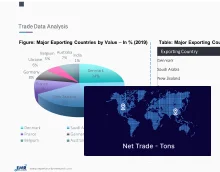
Get insights & trends for a competitive edge.
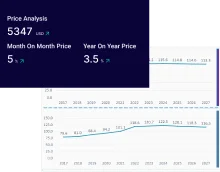
Track prices with detailed trend reports.
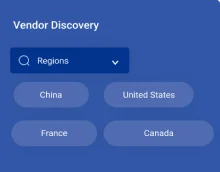
Analyse trade data for supply chain insights.
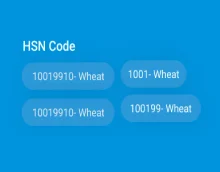
Leverage cost reports for smart savings
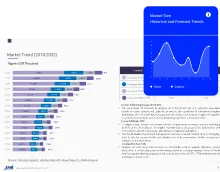
Enhance supply chain with partnerships.
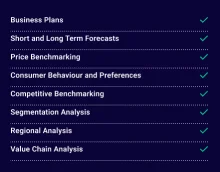
Connect For More Information
Our expert team of analysts will offer full support and resolve any queries regarding the report, before and after the purchase.
Our expert team of analysts will offer full support and resolve any queries regarding the report, before and after the purchase.
We employ meticulous research methods, blending advanced analytics and expert insights to deliver accurate, actionable industry intelligence, staying ahead of competitors.
Our skilled analysts offer unparalleled competitive advantage with detailed insights on current and emerging markets, ensuring your strategic edge.
We offer an in-depth yet simplified presentation of industry insights and analysis to meet your specific requirements effectively.



Australia
63 Fiona Drive, Tamworth, NSW
+61-448-061-727
India
C130 Sector 2 Noida, Uttar Pradesh 201301
+91-723-689-1189
Philippines
40th Floor, PBCom Tower, 6795 Ayala Avenue Cor V.A Rufino St. Makati City,1226.
+63-287-899-028, +63-967-048-3306
United Kingdom
6 Gardner Place, Becketts Close, Feltham TW14 0BX, Greater London
+44-753-713-2163
United States
30 North Gould Street, Sheridan, WY 82801
+1-415-325-5166
Vietnam
193/26/4 St.no.6, Ward Binh Hung Hoa, Binh Tan District, Ho Chi Minh City
+84-865-399-124
United States (Head Office)
30 North Gould Street, Sheridan, WY 82801
+1-415-325-5166
Australia
63 Fiona Drive, Tamworth, NSW
+61-448-061-727
India
C130 Sector 2 Noida, Uttar Pradesh 201301
+91-723-689-1189
Philippines
40th Floor, PBCom Tower, 6795 Ayala Avenue Cor V.A Rufino St. Makati City, 1226.
+63-287-899-028, +63-967-048-3306
United Kingdom
6 Gardner Place, Becketts Close, Feltham TW14 0BX, Greater London
+44-753-713-2163
Vietnam
193/26/4 St.no.6, Ward Binh Hung Hoa, Binh Tan District, Ho Chi Minh City
+84-865-399-124
Share